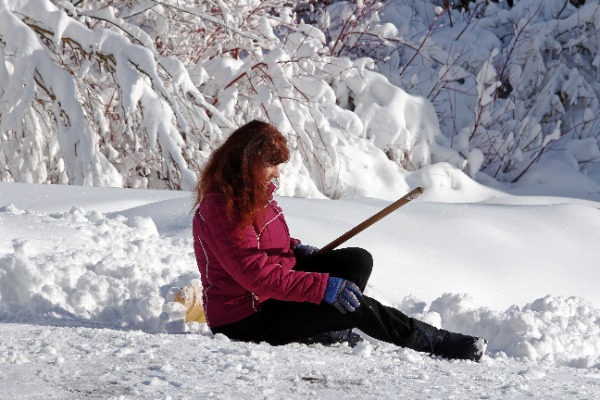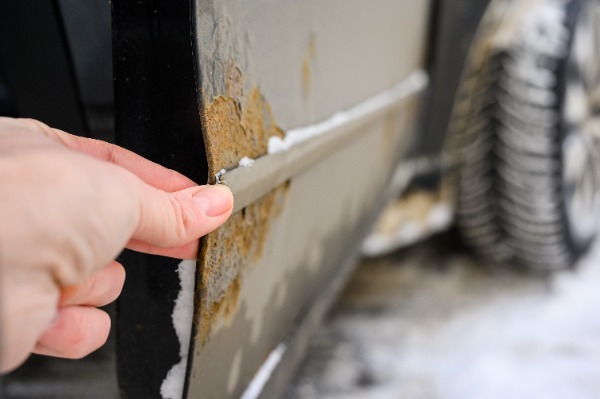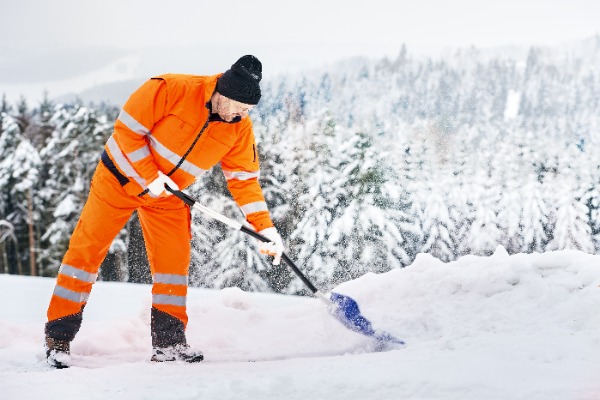Many homeowners believe that clearing snow themselves is the most affordable and convenient solution. After all, shoveling your own driveway seems simple enough, and it avoids the cost of hiring a snow removal service. However, what most people don’t see is the true risk behind doing the job on their own. Effective snow removal requires the right tools, timing, physical technique, and knowledge of how snow and ice damage property.
Without proper experience, DIY snow removal can lead to serious injury, expensive property damage, and long-term wear on your home’s surfaces. Join us as we break down the most common dangers of DIY snow removal and what they can really cost you!

Many people assume that shoveling is just another household chore, but winter weather creates conditions that push your body beyond its limits. Snow becomes dense, heavy, and wet when temperatures fluctuate, turning each scoop into a strain on your spine and joints. Without proper posture and pacing, homeowners often twist their backs, pull muscles, and trigger lingering pain.
Additionally, cold weather constricts blood vessels and raises heart stress. When combined with strenuous activity, especially for people who aren’t regularly active, the risk of a winter-related heart attack increases dramatically. Professional crews use specialized equipment to lift and move snow efficiently with minimal strain, and they’re trained in safe workflows that reduce injury.
Cost of the Mistake:

Snow may look harmless, but scraping icy surfaces with metal tools or applying too much salt can permanently damage concrete, pavers, and asphalt. Excessive force can chip surface coatings, create cracks, and break edges. De-icing salts accelerate freeze–thaw cycles, allowing water to seep deeper and widen cracks as temperatures fluctuate.
Professional snow crews use commercial-grade equipment designed to minimize surface wear, and they apply de-icing agents safely, depending on the material. This prevents pitting, spalling, and premature aging of your driveway and walkways.
Cost of the Mistake:

Not all de-icing products are created equal. Homeowners often purchase rock salt or chemical melts without considering how they interact with soil, landscape, pets, or the environment. Some chemicals burn grass roots, weaken surrounding plants, and corrode metal edging or railings. Others are toxic if tracked indoors by pets or small children.
Professionals carefully select melts based on temperature, surface type, and environmental impact. That level of knowledge prevents damage that may not be noticeable until spring arrives.
Cost of the Mistake:

When the snow piles up, many homeowners clear cars in a hurry with brooms, hard scrapers, or shovels. Unfortunately, abrasive tools drag grit and ice across the paint, leaving scratches that may not be visible until the sun hits them in spring. Metal edges can also scrape siding, garage doors, or porch railings.
Professionals use soft-bristled brushes and proper techniques to remove snow without grinding debris into the paint or exterior surfaces, preserving the long-term value of your property.
Cost of the Mistake:

Many homeowners push snow into piles near gutters, foundations, or low spots without realizing how meltwater will behave later. When temperatures rise, melted snow drains toward the foundation, where it can seep into basements or create ice dams along gutter edges.
Professionals plan snow placement strategically, directing piles toward safe runoff zones that won’t compromise your home’s structure.
Cost of the Mistake:

Beneath fresh snow, flower beds, delicate shrubs, and landscape edging are easy to overlook. Heavy shoveling can snap branches, crush plants, and break buried irrigation lines. Even stepping on frozen turf can cause crown damage that doesn’t appear until spring.
Snow removal businesses understand property layouts and know how to avoid fragile areas, even when they’re invisible under ice and snow.
Cost of the Mistake:
While DIY snow removal feels like a budget-friendly approach, the hidden risks can add up quickly. Winter is unpredictable, and one wrong move can affect your health, home, or wallet for months. Professional snow removal offers predictable results, safer methods, and equipment that’s engineered for harsh conditions.
If you want to save money in the long run while you stay safe and dry this winter, call Summit for the best snow removal services in Lincoln, Nebraska!